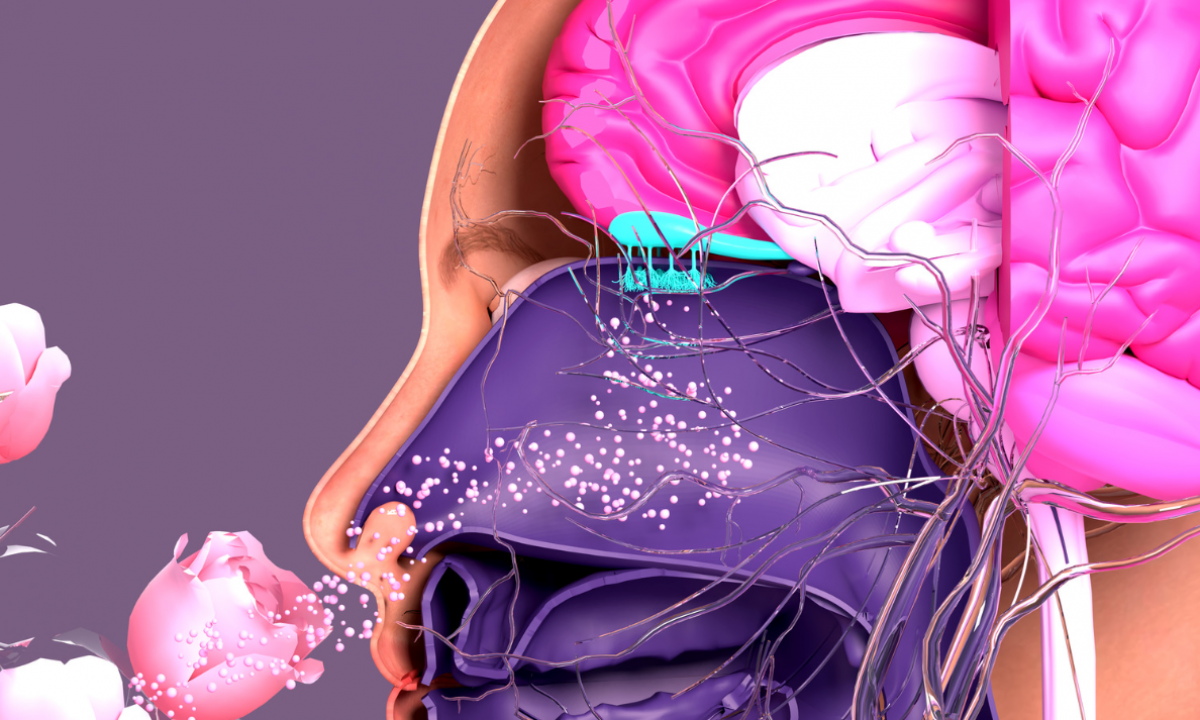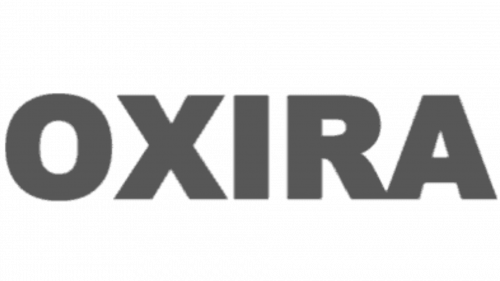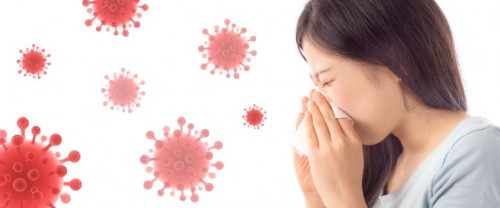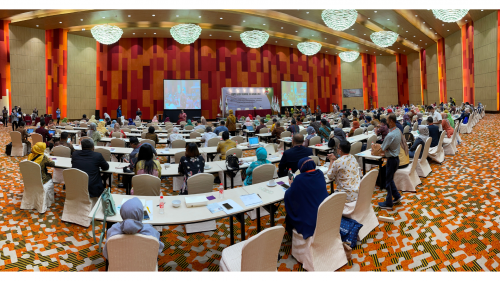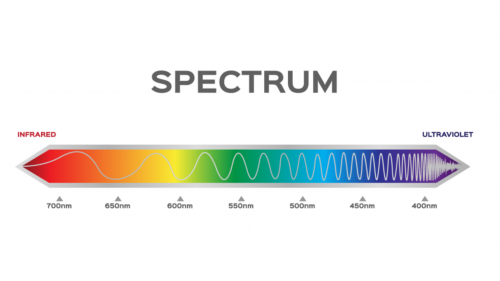Latihan penciuman (Olfactory training/Smell Training) merupakan salah satu pilihan perawatan non-farmakologis dan non-bedah untuk pasien dengan disfungsi penciuman. Pasien yang menjalani pelatihan penciuman akan melatih diri mereka untuk mencium 4 bau berbeda, dua kali sehari selama setidaknya 24 minggu. Indikasi utama meliputi disfungsi penciuman pasca infeksi, pasca trauma, dan idiopatik serta disfungsi penciuman akibat COVID-19 atau penyakit Parkinson.
Sekitar 20% orang dalam populasi umum memiliki gangguan indra penciuman. Gangguan penciuman akan menyebabkan penurunan kualitas hidup. Hilangnya penciuman dapat menyebabkan hilangnya rasa awas terhadap hal yang berbahaya. Contohnya ketika terdapat bau gas alam atau asap, penderitanya mungkin tidak bisa mencium bau ini. Selain itu, indera perasa juga berhubungan erat dengan indra penciuman, dan berkurangnya rasa bisa jadi penderitanya tidak menyadari bahwa makanan yang dimakan sudah terkontaminasi atau basi. Selain itu, gangguan penciuman mungkin merupakan tanda peringatan untuk gangguan neurodegeneratif umum, seperti demensia Alzheimer, penyakit Parkinson, atau COVID-19.
Selain obat-obatan, ada juga pendekatan non-bedah dan non-farmakologi untuk bisa meningkatkan kembali fungsi penciuman. Pendekatan ini disebut juga dengan pelatihan penciuman (Olfactory training/Smell Training), di mana pasien akan mencoba mencium 4 aroma berbeda, dua kali sehari selama beberapa minggu.
Sebelum melakukan pelatihan penciuman, pasien harus melakukan pemeriksaan fisik hidung secara menyeluruh untuk mencari kemungkinan etiologi. Kemudian dilakukan pemeriksaan objektif fungsi olfaktorius dengan menggunakan tes stik sniffin, untuk mengetahui baseline fungsi olfaktorius pasien sebelum dilakukan terapi. Pasien juga perlu diberikan pemahaman bahwa pelatihan penciuman ini tidak dalam waktu singkat/instan, sehingga tidak perlu merasa kecewa jika prosesnya berjalan dengan lambat.
PERALATAN
Pelatihan penciuman membutuhkan berbagai jenis aroma, aroma yang akan dipakai untuk pelatihan disiapkan dalam botol atau toples. Aroma yang paling umum digunakan adalah lemon (fruity), mawar (floral), cengkeh (spicy) dan kayu putih (resinous). Mengapa yang digunakan adalah keempat aroma ini? kebanyakan orang dapat mengidentifikasi lima rasa berbeda: asin, manis, pahit, asam, dan gurih (umami). Beberapa peneliti juga mencoba mengkategorikan banyak bau yang berbeda. Kategori ini termasuk bau bunga (floral), bau buah (fruity), bau pedas (spicy), bau resin (resinous), bau terbakar dan bau busuk. Alih-alih berlatih dengan mencium bau terbakar atau bau busuk, pelatihan ini berkonsentrasi pada bau yang lebih menyenangkan dari empat kategori lainnya. Keempat aroma ini akan merangsang pola reseptor yang berbeda di saraf penciuman. Jangan lupa juga untuk menyiapkan penghitung waktu untuk mengatur lamanya latihan.
PROSEDUR
Untuk pelatihan penciuman standar, pasien harus mengendus aroma dua kali sehari (sebaiknya sekali di pagi hari sebelum sarapan dan sekali di malam hari sebelum tidur). Pelatihan penciuman ini harus dijadikan kebiasaan sehari-hari, minimal selama 12 minggu.
Prosedur latihan penciuman diantaranya sebagai berikut:
- Pasien diminta untuk menilai fungsi penciumannya secara mandiri sebelum latihan penciuman dilakukan
- Pasien duduk di tempat yang tenang tanpa gangguan
- Buka botol yang berisi aroma dan dekatkan tutup botol dengan hidung. Tutup botol kemudian diendus secara perlahan selama 20-30 detik
- Ingatkan pasien untuk berkonsentrasi dalam proses ini. Pusatkan perhatian pada aroma yang sedang dicium, misalnya jika sedang mencium aroma lemon maka fokuskan pikiran pada lemon dan pengalaman sebelumnya terkait lemon
- Jauhkan tutup botol dari hidung dan bernapas beberapa siklus. Tidak ada ketentuan khusus mengenai waktu jeda antar odoran
- Ulangi proses ini untuk tiga aroma lainnya
Selalu catat setiap hasil/progres pelatihan untuk dilakukan evaluasi. Jangan langsung mencium bau cairan dari botolnya, karena essential oil akan berisiko mengiritasi kulit jika terkena secara langsung dan dalam jumlah yang banyak. Pelatihan penciuman ini diyakini bekerja sebagai kombinasi dari kemampuan unik saraf penciuman untuk tumbuh kembali sambil mendorong peningkatan konektivitas otak.
DURASI PELATIHAN
Biasanya, pasien menjalani pelatihan penciuman setidaknya selama 24 minggu. Untuk pasien dengan disfungsi penciuman pasca-infeksi, pelatihan penciuman selama satu tahun menghasilkan hasil yang lebih baik daripada pelatihan selama 16 minggu. Untuk pasien dengan hiposmia atau anosmia tanpa riwayat infeksi sinonasal, pelatihan penciuman, mengikuti protokol standar (yaitu, pelatihan penciuman dengan empat bau berbeda dua kali sehari selama minimal 24 minggu), mungkin merupakan awal yang baik.
FOLLOW UP
Setelah 12 minggu, evaluasi keberhasilan latihan penciuman dengan:
- Subjektif, dilihat dari catatan pelatihan individu
- Objektif, dengan melakukan tes di klinik dengan menggunakan tes stik sniffin. Bandingkan hasilnya dengan catatan pelatihan individu
Pasien juga dapat dijadwalkan kontrol ke klinik dengan interval beberapa minggu, untuk meningkatkan kepatuhan pasien dalam melakukan pelatihan penciuman. Pada setiap pertemuan, evaluasi dengan anamnesis dan pemeriksaan fisik untuk menilai fungsi penciuman pasien.
Referensi:
- National Institutes of Health. (2022). Olfactory Training
- ENT Health. (2021). Smell Retraining Therapy
